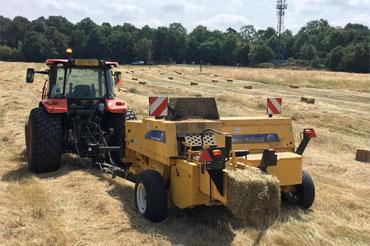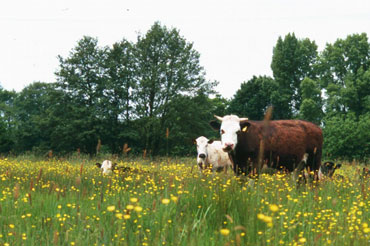The importance of conserving biodiversity
Grasslands are an important part of the natural and urban landscape.
They strengthen our resilience to the impact of climate change. They provide habitats for several different plant and animal species.
This includes important pollinator insects such as bees and butterflies, which have suffered huge declines in numbers in recent decades. This is partly due to a loss of flower rich grasslands.
How we manage meadows
In many grassland areas we only cut once a year, during the late summer. This increases the number of wildflowers that are growing and provides a food source for bees, butterflies and other insects. These areas of longer grass may sometimes look unkempt but they are important habitat for wildlife including:
- wildflowers such as the Common Spotted Orchid, Ragged-Robin and Devil’s-Bit Scabious
- insects such as the Gatekeeper butterfly, bees, grasshoppers, crickets and dragonflies
- mammals such as Roe Deer and field voles
- birds such as skylarks, linnets and finches
The hay we collect is used for animal feed.
There are also areas of shorter mown grass, which are used as amenity areas. These are cut more regularly (every 14 to 28 days) during grass growing season by Continental Landscapes Ltd, who cover the whole of Bracknell Forest.
Advice about creating your very own wildlife meadows, or wild patches, is available from the RHS (Royal Horticultural Society) and The Wildlife Trusts.


We also use livestock, such as cattle and sheep, to graze our meadows during the spring and summer. Traditional grazing with livestock is also known as conservation grazing. This is because it is effective in helping wildlife to thrive.
Grazing slows down the growth of grass and scrub and helps wildflowers to flourish. It also creates vegetation at different heights and small areas of bare ground.
This provides a wide range of wildlife habitats, including ideal places for birds to nest on the ground. Using low stock density and having the cattle in designated areas means there is minimal impact to these birds.
Sites that are currently home to livestock include:
- Horseshoe Lake
- Shepherd Meadows
- Larks Hill
- Garth Meadows
- Frost Folly
For more information, view our Boosting biodiversity in grassland guide.
If you are visiting these sites in the spring and summer, please keep your dogs on leads. This is to protect the animals and keep you safe.
How we manage roadside nature reserves
Roadside nature reserves are areas of grass verge rich in wildlife. We manage these roadside areas to allow wildflowers to grow and support an abundance of insects such as bees and butterflies.
For wildflowers to grow and flourish, grass areas need to be managed in a different way to most grass verges, which are mown regularly. Roadside nature reserves are left uncut between spring and late summer, so that the grass and wildflowers can grow.
They will not be cut again until after the wildflowers have set seed. In the meantime, these areas should be full of colour and alive with the sound of foraging bees and the sight of butterflies and other insects feeding on wildflower nectar.
Conserving biodiversity in towns and cities areas has become increasingly important as the landscape has become more urbanised. Grasslands managed for biodiversity are important havens for wildlife. They act as corridors for the movement and migration of wildlife in urban environments.
We want to increase the number of roadside nature reserves each year as part of the Bracknell Forest Biodiversity Action Plan.
Some of our roadside nature reserves also support rare plants such as orchids. Sadly these plants are often dug up in the mistaken belief that they will be ‘better off growing elsewhere’.
How we manage verges
We manage our grass verges to:
- reduce the impact of climate change
- increase biodiversity
- improve the health of trees growing on verges
Grass under trees
We leave grass uncut under trees throughout the growing season. We cut this grass once a year at the end of the season and leave the cuttings to compost naturally. This is different to how we manage our wildflower meadows, where we remove the cuttings to prevent grasses from becoming too dominant.
These ‘cut and drop’ areas will have a clear perimeter around them where the grass will be cut every fortnight. The perimeters are important for safety.
Removing the need for frequent cuts in these areas helps to:
- provide a natural protection to the base of trees and tree roots, by preventing soil compaction and retaining moisture
- increase plant and insect habitats and corridors - including important pollinator species
- allow natural replenishment of the seed bank and provides a food source for bees, butterflies and other insects
- build our resilience to climate change impacts by retaining moisture, keeping the ground cooler and returning carbon to the soil when grass cuttings are left to compost naturally
Using less machinery to cut and transport the grass cuttings will also help to reduce carbon emissions. See what we’re doing to tackle climate change.
